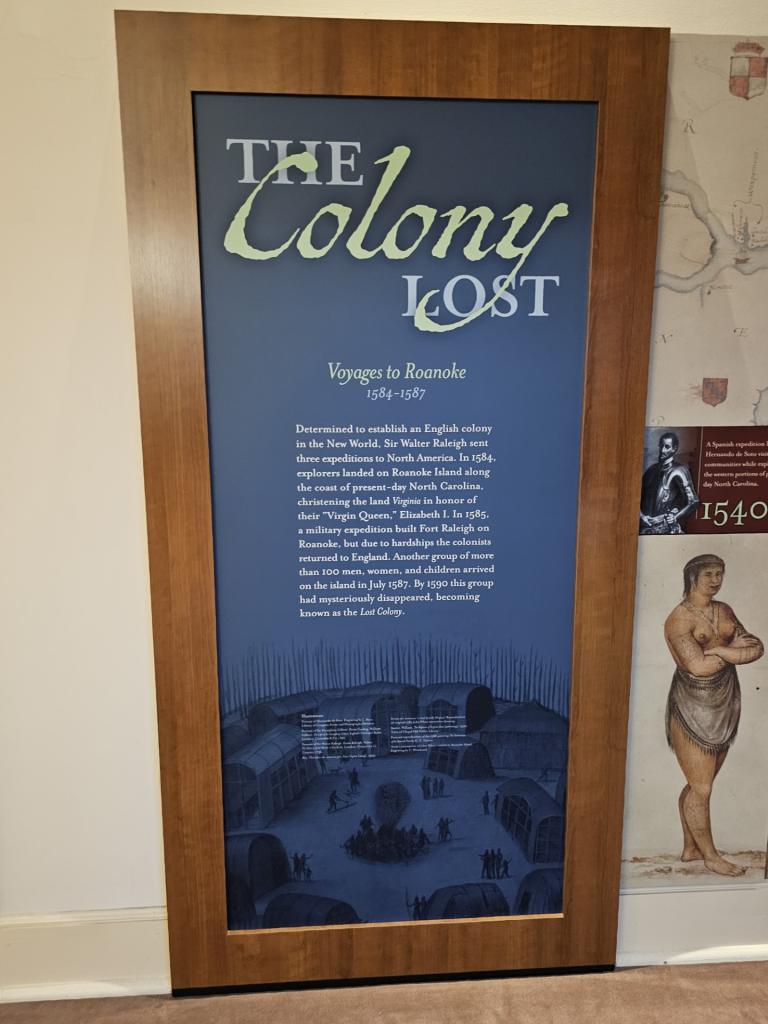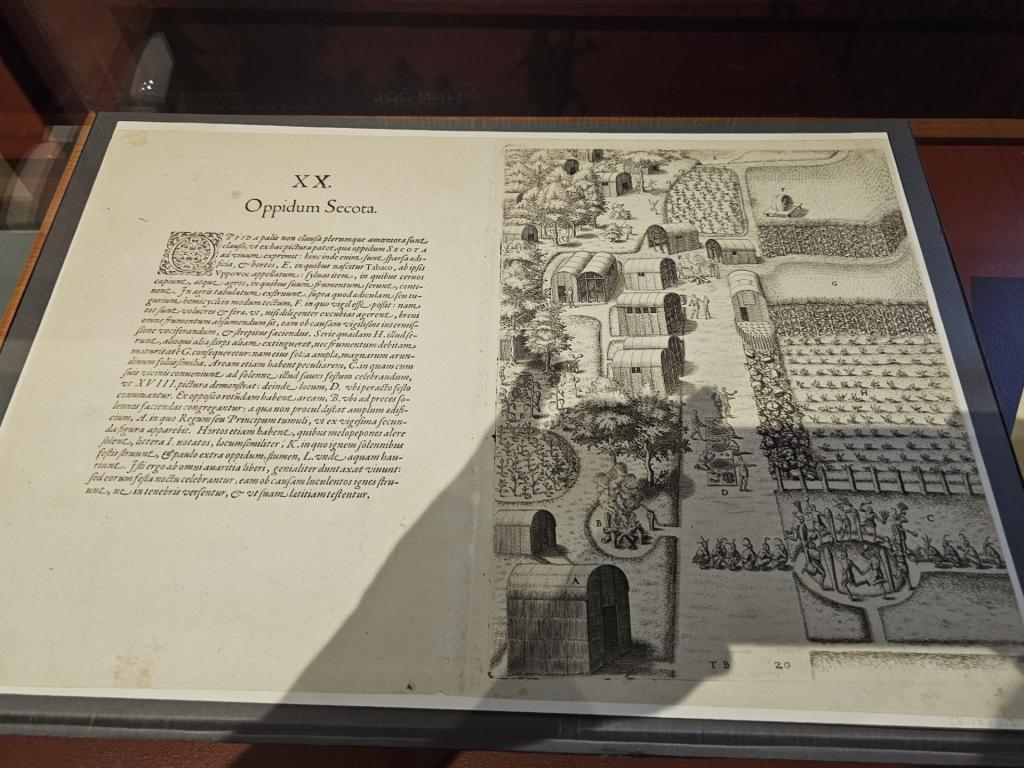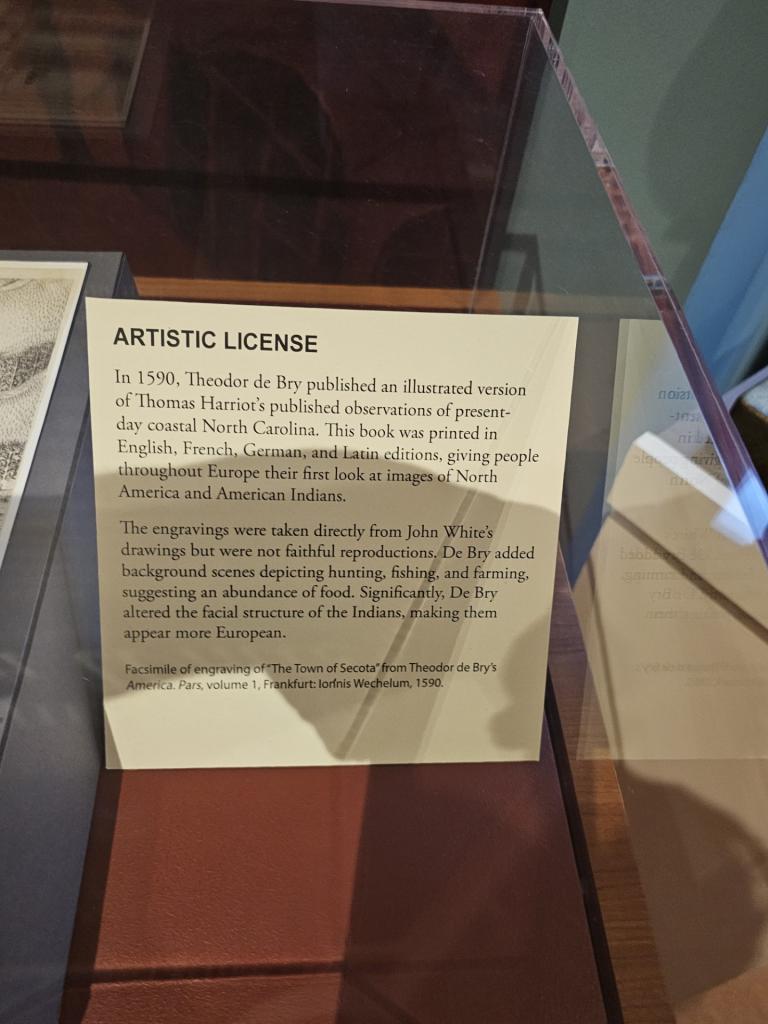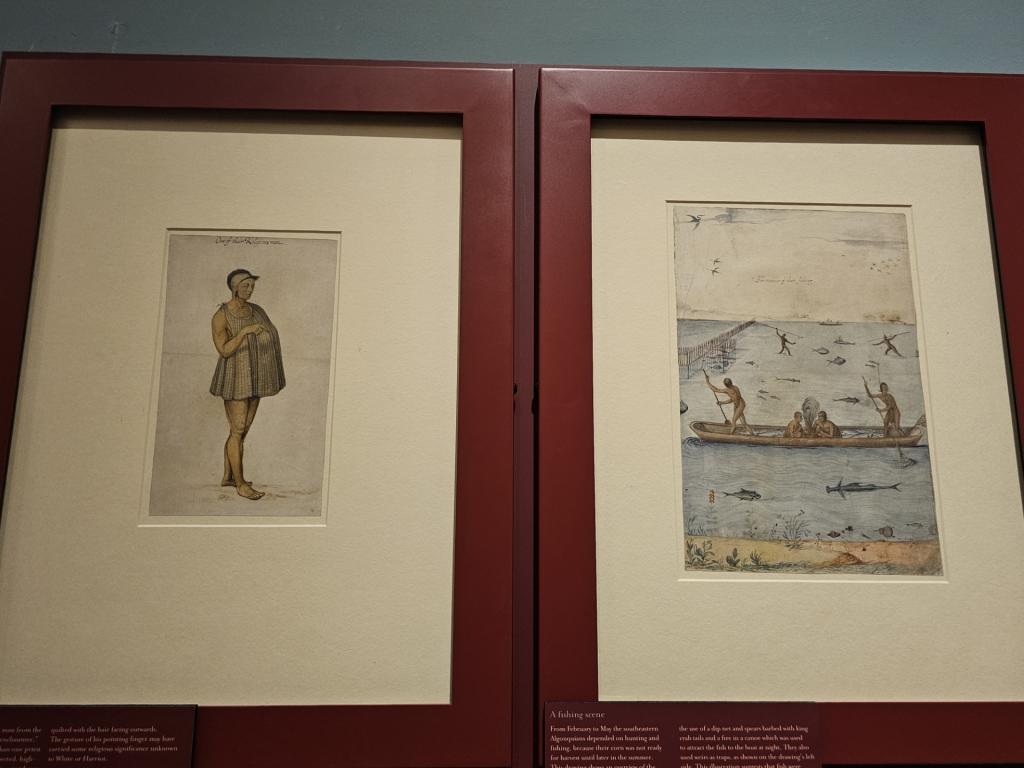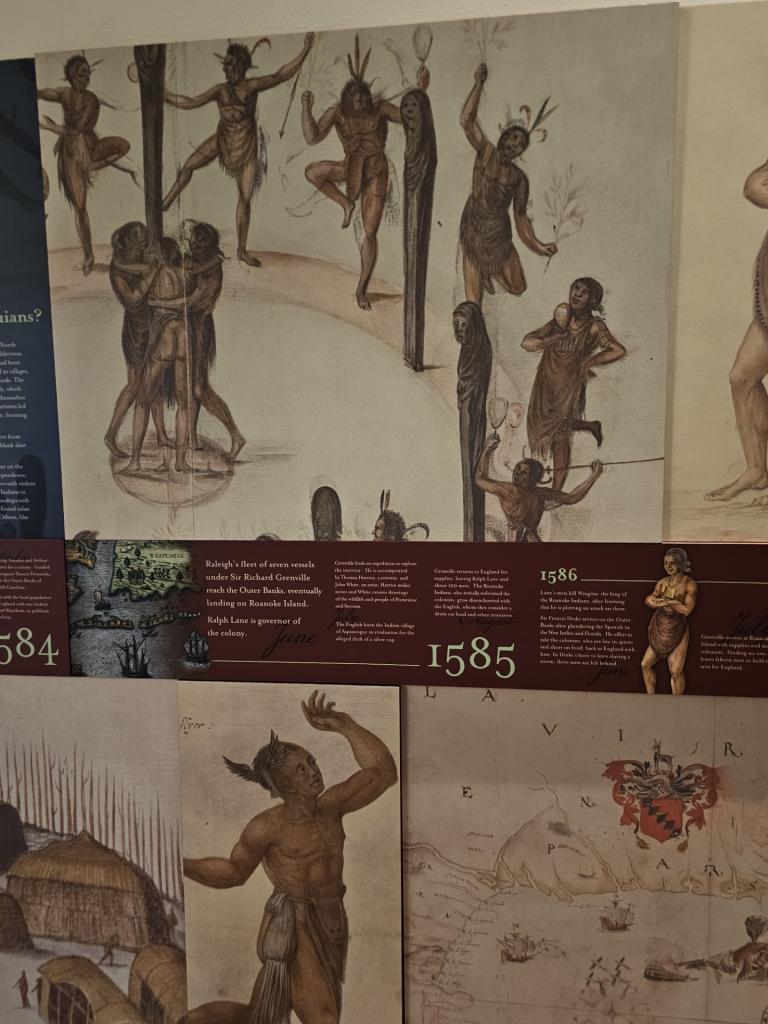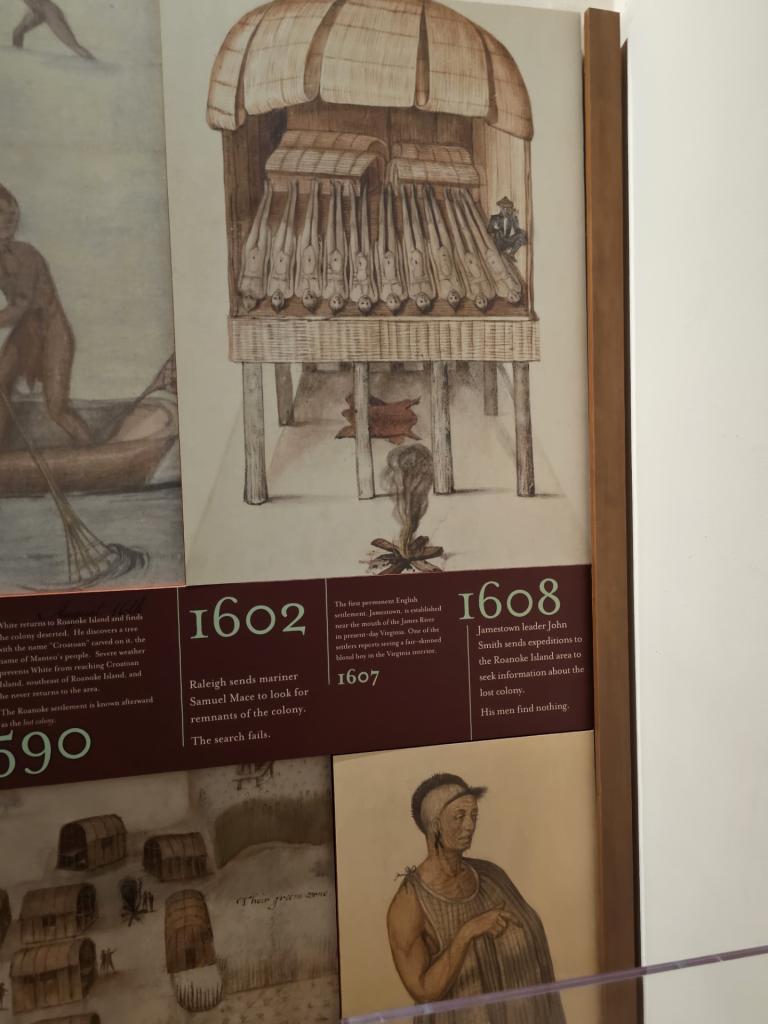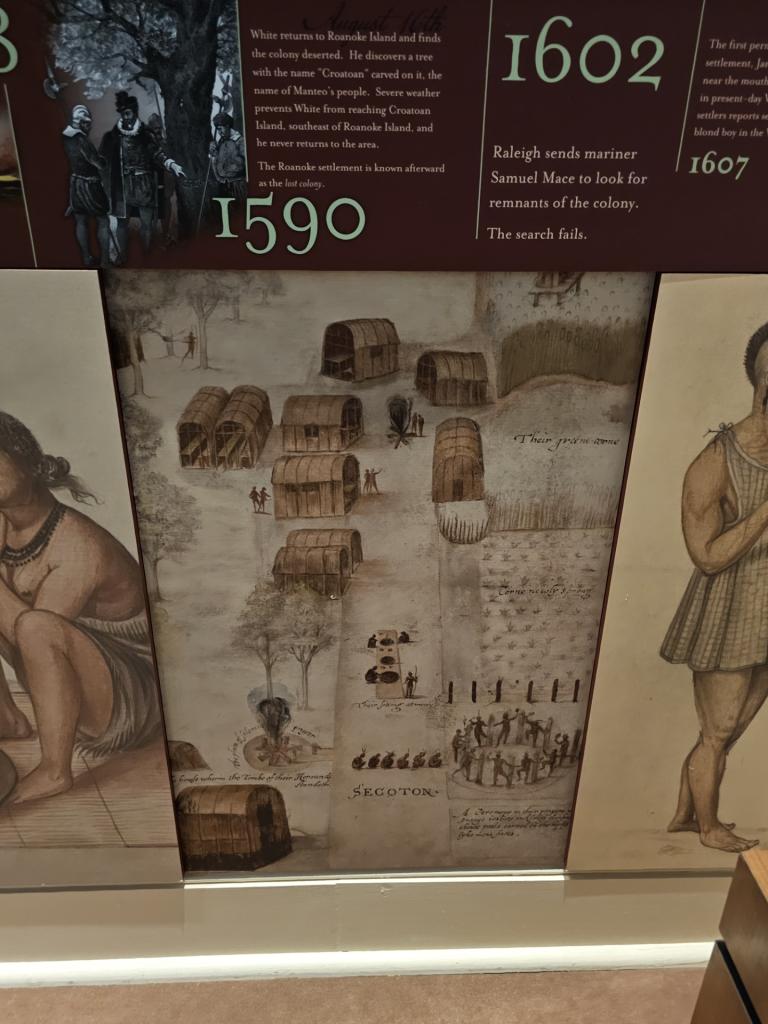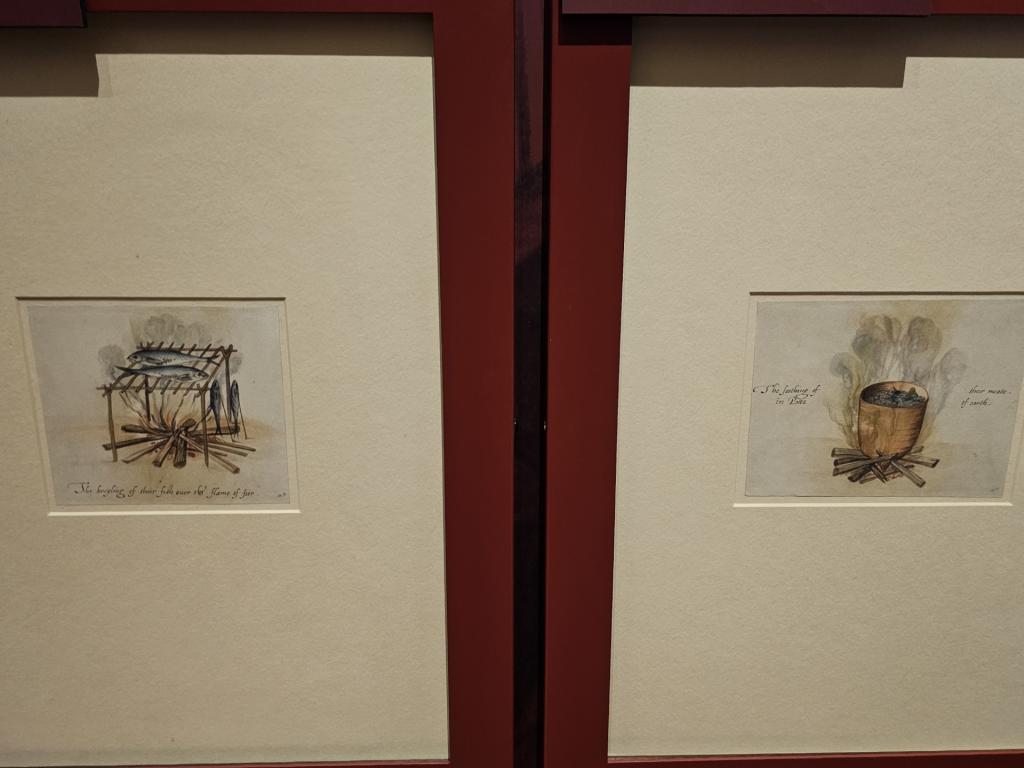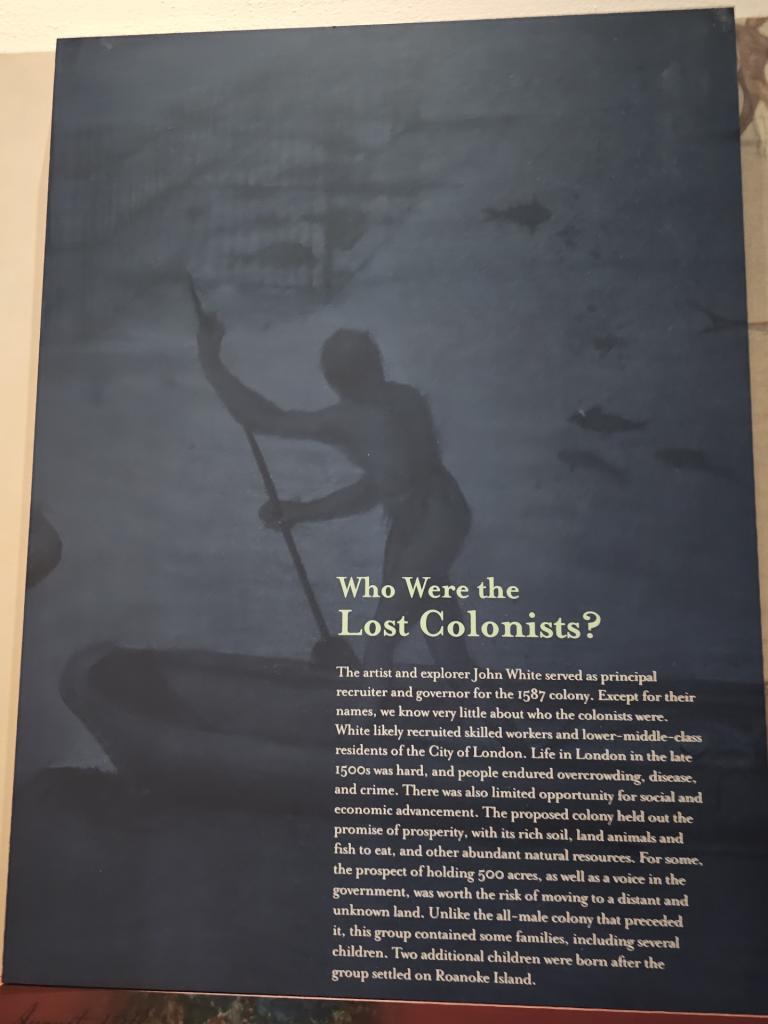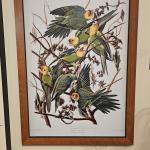The lost colony has been one of the favorite mysteries N.C. school children have been regaled with forever. My personal theory, having gone to see the Lost Colony play, is that the colonists were carted off my giant mosquitoes. If you go to the play in summer, bring your spray. We are fortunate that we have early drawings by John White and others of what such a colony would have looked like.
Before the 17th century, Thomas Harriot published his own observations about the coastal Carolina region and fortunately we still have access to these.
Here are some of the drawings of Indians etc.
As the story goes when White and others returned to Roanoke Island, all they found of the colony was the word Croatan carved in a tree. Were these the Indians who carted off the settlers somewhere? There have been tales of Indians further south in Georgia with blue eyes, and light colored hair. Did the settlers intermarry with the Indians? We do not know, but its an intriguing possibility. Here’s what Wikipedia says about the matter:
“Some of the survivors of the Lost Colony of Roanoke may have joined the Croatan. Governor White finally reached Roanoke Island on August 18, 1590, three years after he had last seen them there, but he found his colony had been long deserted. The buildings had collapsed and “the houses [were] taken down.” The few clues about the colonists’ whereabouts included the letters “CROATOAN” carved into a tree. Croatoan was the name of a nearby island (likely modern-day Hatteras Island) in addition to the local tribe of Native Americans. Roanoke Island was not originally the planned location for the colony and the idea of moving elsewhere had been discussed. Before the Governor’s departure, he and the colonists had agreed that a message would be carved into a tree if they had moved and would include an image of a Maltese Cross if the decision was made by force. White found no such cross and was hopeful that his family was still alive.”
“The Lost Colony Center for Science and Research has excavated English artifacts within the territory of the former Croatan tribe. The artifacts may also be evidence of trade with the tribe or of natives finding them at the former colony site. The Center is conducting a DNA study to try to determine if there are European lines among Croatan descendants.
“Researchers from the University of Bristol, UK, have also been excavating on Hatteras Island in conjunction with the Croatoan Archaeological Society. Hatteras Island is the main locus for the settlement of the Croatoan tribe and to date, they have discovered a large contact/pre-contact period settlement, midden deposits, and European trade items.
19th century
Historian Malinda Maynor (Lumbee) wrote that, in 1890, a group of about 100 people who self-identified as Croatan descendants, or Lumbees, left Robeson County, North Carolina, for southern Georgia. By building a church and a school for their people outside of the influence of publicly funded or pre-existing buildings in the area, they established an identity for themselves that subverted the racial barriers of the time which, locally prior to 1890, had operated under a very clear distinction between “black” and “white.” This group, instead, considered themselves to be “Indians.” They headed back to Bulloch County where they could keep their people together as “Indians.” They used the segregation of Jim Crow South to develop themselves as an entire community. In 1910, the North Carolina state legislature renamed the Croatan Indians in North Carolina to “Cherokee.”
“A historical marker placed by the state of Georgia states: “In 1870 a group of Croatan Indians migrated from their homes in Robeson County North Carolina, following the turpentine industry to southeast Georgia. Eventually, many of the Croatans became tenant farmers for the Adabelle Trading Company, growing cotton and tobacco. The Croatan community established the Mt. Zion Baptist Church in Adabelle, as well as a school and a nearby cemetery. After the collapse of the Adabelle Trading Company, the Croatans faced both economic hardship and social injustice. As a result, most members of the community returned to North Carolina by 1920.”
State-recognized tribes
The North Carolina state legislature recognized the Croatan Indians of Robeson County and the Croatan Indians of Sampson County in 1911. They were also granted the right of “Indians and their descendants shall have separate school for their children, school committees of their own race, and shall also have the right to choose their own teachers based upon the general assembly of North Carolina. Today, these two groups are state-recognized tribes, known as the Lumbee Tribe of North Carolina and the Coharie Intra-tribal Council, Inc., respectively.


